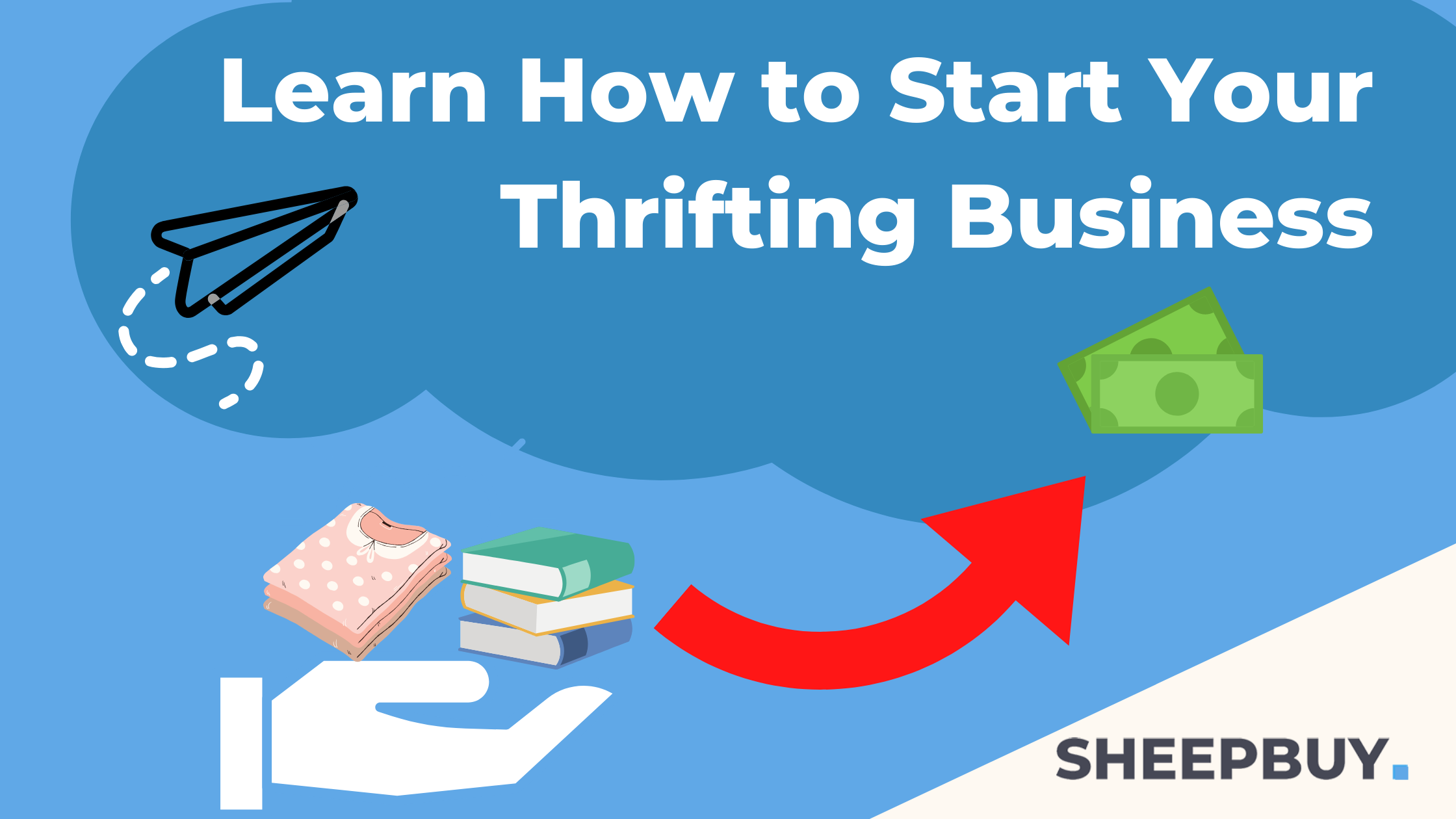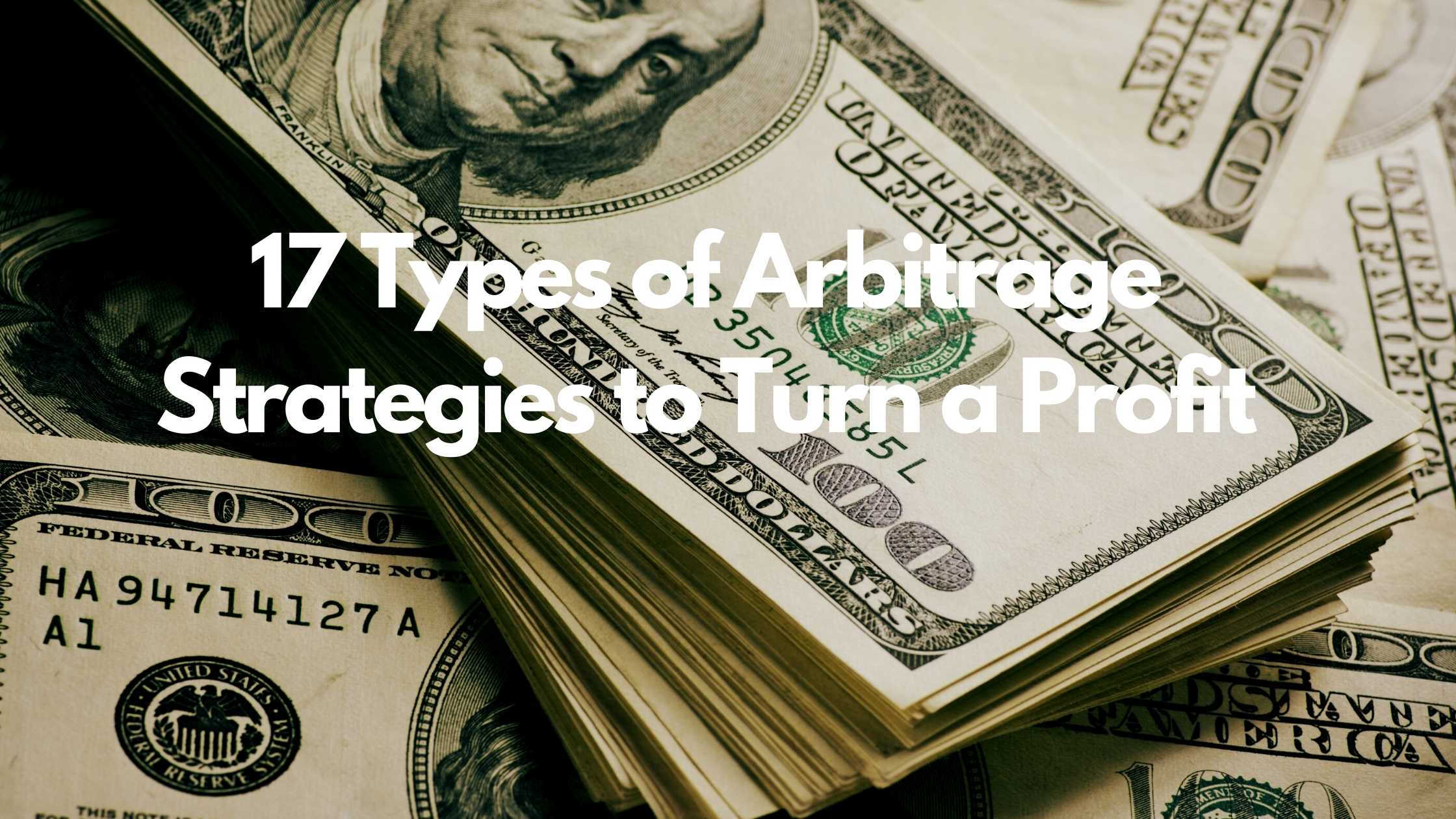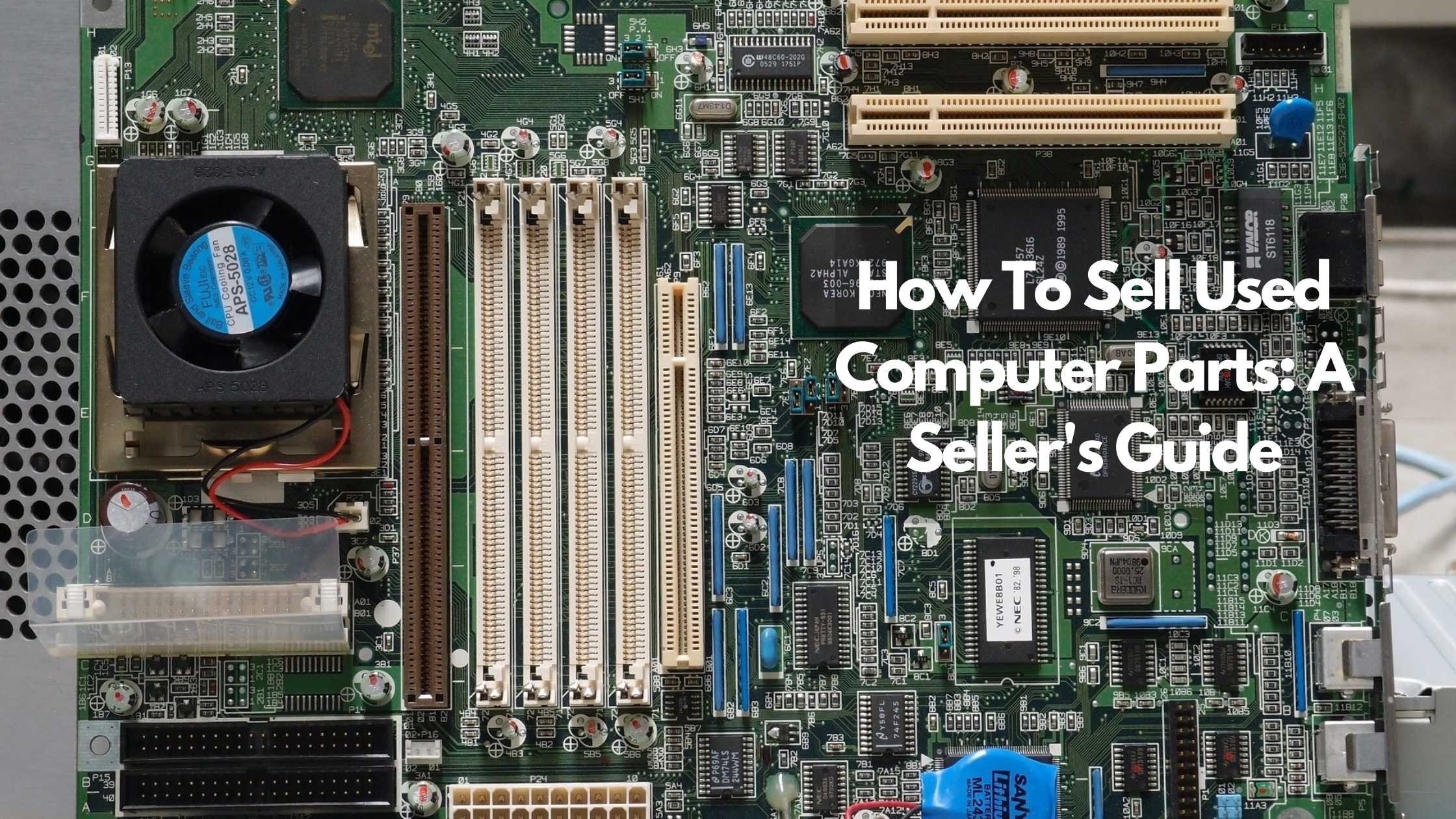
Thrifting for Profit: How to Earn an Extra $1,000+ a Month

Thrifting can be a fun hobby for collectors or bargain hunters, but did you know you can actually turn thrifting into a significant side hustle?
Well, the answer is yes. And thrifting for profit is easier than you might think.
So, get ready to learn because we’re going to help you get started with your thrifting business. We’re talking real profit that you can use for extra income.
The truth is, this side hustle (but sometimes a full-time one), has been used by entrepreneurs for ages. And it still works today!
So that’s why, in this article, we’re going to teach you the ropes to help you learn how to thrift like a pro. From sourcing to shipping — start to finish.
Now, let’s get you started on your thrift flipping journey.
How Do I Start Thrift Flipping?
Thrift stores are full of different products that you can resell for a profit and make great money. All you need is some entrepreneurial spirit and a bit of thrifting know-how to start thrifting for profit.
On its face, thrifting as a business is simple to start. All you have to do is find a thrift store near you, pick out some items you think will sell, and list them online.
Of course, simple doesn’t mean easy. There are lots of nuances when it comes to flipping and plenty of little things that can propel your success.
We’ll be covering more of the specifics later but here are some great beginner tips:
- Specialize – Specializing in one product category makes looking for products to sell straightforward and allows you to get to know a market.
- Picture perfect – When listing items online, you’ll want to ensure you take clear, well-lit images of your items. Buyers want to be able to see what they’re buying. Different angles and fantastic images will do wonders for your sales.
- Location – Find thrift stores nearer to wealthier neighborhoods to increase your chances of finding valuable items. You’ll want the odds in your favor as much as possible.
While these are enough to get you started thrift flipping, there’s plenty ahead in this article that can turn you into a pro with the sales to match.
Profit and Money Expectations for Thrift Flipping
Did you know the resale industry generates $17.5 billion in revenue a year?
Similar to many other things in life, thrift flipping is a skill. This means that you can expect to get out of it roughly as much as you put in.
Finding and selling valuable items takes time, money, and effort. How much time, money, and effort you’re willing to dedicate will directly affect your profits.
Flipping thrifts online can be profitable enough to live off of, but it takes lots of knowledge and dedication to reach this level. For most resellers, flipping is a side income that they can work on in their spare time.
It’s difficult to tell you how much money to expect to make, but as a side income, flipping will likely yield you between $100-$1500 monthly. Keep in mind that how much you make is entirely dependent on how hard you work at it.
But on the other end of the spectrum, I know people that’ll flip all kinds of thrifts and antiques where they generate enough income to support a fairly lavish lifestyle. Of course, to reach these levels, it’ll have to be more of a full-time gig.
Where to Go for Thrifting for Most Profit
The first location you should look for thrift finds is a thrift store, of course!
As we said previously, you can improve the quality of the items you might find by shopping at thrift stores in wealthier neighborhoods.
However, usual thrift stores aren’t the only places you can find “thrift finds.” Here are some other places you can find exceptional items to resell:
- Garage & Yard Sales – Garage and yard sales are great places to find items that you can resell. You’ll often find that items at garage sales can be even cheaper than thrift store prices, and you get the added benefit of a chance to haggle lower prices.
- Flea Markets – Flea markets can be filled with all kinds of unique items for you to resell. Flea markets can also be fantastic places to source antique items at great prices.
- Estate Sales – Estate sales occur when someone has recently passed away, and their possessions are to be sold. These sales can yield all kinds of great finds and are definitely worth checking out. Find local estate sales online and get hunting.
Now you can expand your horizons and increase your sourcing locations. Keeping up with local sales and having multiple stores/markets in your rotation will significantly increase your chances of adding to your inventory.
What to Look for When Thrifting for Profit
When you walk into a thrift store, you’re going to see all kinds of items. Narrowing down which things to buy and resell can seem overwhelming.
It’s no lie that anything in a thrift store has the potential to make you money, but there are undoubtedly several items that tower above the rest.
Here are our top seven items that you can pick up for some profit:
- Vintage/ High-End Clothing – Think designer brand coats, shoes, bags, etc. Buyers want these clothes at a discount, and you’d be shocked to find out how many designers you can find thrifting.
- Books – Books are a fantastic item to resell. Textbooks, rare collectors editions, old leather-bound books, and literary classics are the ones to find.
- Vintage Tech – These items take some additional research, but there are tons of sub-categories you can cater to. This is an especially good category for the more technically oriented, handy types of people.
- Vinyl Records – With tons of dedicated collectors, you already have a ready and willing market with vinyl. Jazz, classic rock, country, and classical can be great genres of music to find.
- Unique/Antique Mugs – Unique mugs are a great collector’s item, and if you can find yourself some antique cups like teacups or steins, you’ve got some great pieces. Mugs are generally a slower sell than other items but are perfect for those with less time to source.
- Collectible Toys – Rare, collectible, and old toys can end up being dependable money makers. The vast number of toys out there means plenty of different markets you can enter.
- Precious Metal Silverware – Silverware also takes some extra research. But silverware can pull in some decent profits if your stuff is made of the right stuff. Sterling silver and gold are what you’ll want to be buying.
Read our guide on how to flip books.
Naturally, there’s much more to say about every one of these items. That’s why we went in-depth on all seven of these great finds already. To ensure that you find the best quality items from any thrift store, you’ll need to be well versed in your chosen categories.
You’ll need to do your homework and learn the nuances of the products and their markets to decrease your chances of buying duds.
Managing Your Thrift Inventory
As you start to grow and bring home more and more items to sell, you’ll need to figure out how to handle it all.
Luckily for you, we have some great advice on how to manage your new inventory.
- Organized Storage – How you store your items depends on what they are. For you, organized storage could be a spare closet or a set of labeled containers. But you’ll need to find a place that you can easily store your inventory and keep it from becoming a mess.
- Spreadsheets – Now, it’s getting official. And you need a system in place. Some simple spreadsheets to keep track of stock, sales, item conditions, and item types could serve you well.
- Office Supplies – Having handy materials like packing tape, a printer, a boxcutter, etc. can be a tremendous organizational help and smooth out the process of dealing with your inventory.
Early on, you might not have needed an organized system or supplies to ease the process. But as you grow your thrift flipping operation, you’ll want to consider these things to save you some inventory headaches later on.
The Best Place Online to Sell Your Thrifts for Profit
Now, one of the most annoying things about starting to thrift flip is using confusing selling platforms that charge you hidden fees and don’t make it easy.
Sometimes this confusion and extra expense stop would-be flippers, and we don’t want that. That’s why we recommend our fantastic new selling platform, SheepBuy.
SheepBuy lets sellers get started for free and charges no hidden fees.
Yes, really. Free! SheepBuy takes a unique approach to work with sellers and offers monthly plans to list items and avoid all those annoying fees that you get selling with other platforms.
There’s no need to worry about the security of your money either. You get your profits sent directly to your PayPal account, and your monthly subscription is handled through Stripe.
Get started with SheepBuy right away, and don’t wait to start making money!
Listing Your Thrifts Online
So, you’ve found some exceptional items to resell, and now you need to list them. Let’s go over what you need to do and how you can improve your listing process.
Sure, you could just take a quick snapshot of your item, throw it online, and tell the buyers what it is and nothing else. Good luck with selling it.
Buyers want to know as much as they can about what they’re buying. So tell them, and show them.
Remember:
Transparency is key to successful sales.
Here are our listing steps that will ensure you increase your chances of selling:
- Take great pictures. Take well lit, clear images from different angles that show the item in its entirety. Online buyers love to see their potential purchases well.
- Give an accurate description. When leaving a report on the listing, ensure to tell all you can about the item. Be honest about the condition. Buyers hate finding problems they weren’t told about before their purchase.
- Give a fair price. This should go without saying, but make sure you list the item at a reasonable price. If you’re unsure about a price, take a look at what similar items are going for online. Don’t be greedy or price gouge the item, or you’ll never make any sales.
Follow this process every time you make your listings to provide your buyers with plenty of helpful information.
For a more general listing tip, we believe that setting up a listing station in your home can be a great aid in providing buyers with beautiful listings. Have a consistent space with a simple background and good lighting that allows you to take great pictures consistently. And don’t forget a camera that takes clear, crisp photos.
Packaging and Shipping
Packaging and shipping your items might sound boring, but it should excite you! You’ve made a sale!
This is primarily where those office supplies are going to come into play. You’ll want packing tape, bubble wrap, and newspaper as well to help ship your items. A reliable printer will help you consistently print shipping labels to ship your packages.
If you’re missing boxes or envelopes, you can order them for free off of the USPS website. Luckily boxes aren’t valuable and won’t cost you any extra expense.
Make sure your packages are secure and closed up tightly, nobody likes getting their purchase only to find it damaged due to inadequate packaging.
Creating a Process and Schedule
One of the best ways to grow your sales is to set up a process and a schedule.
Consistency is key here.
Your process will vary depending on what you sell. You’ll need to tailor it to remain organized and on top of your inventory and listing processes. Adding steps like cleaning clothes a certain way or sorting damaged and working electronics can help keep things flowing smoothly.
A great piece of the process puzzle that we can clarify for you is setting a schedule. Get into a shopping routine. Find multiple stores and pick a consistent time and day to hit them one after the other and source your products.
It may be helpful to ask when they usually put out new items or how often they get deliveries to ensure the store is worth your time. Stores that change inventory often are prime targets.
Conclusion
We’ve covered everything you need to know to get started with thrift flipping and to organize, optimize, and save money as you grow.
If you’re still sitting on the fence about starting to flip, get out there, and shop with confidence. You now have the tools to get your journey moving.
Go check out your local thrift stores and take note of what they have. You might be able to see a bit more value than you did before.
Recommended Blog Posts:
TRENDING


Online Arbitrage for Beginners (Step-by-Step Guide)

17 Types of Arbitrage Strategies to Turn a Profit

Is Retail Arbitrage Legal?

How to Turn Textbook Arbitrage into a Business for Profit

How Can You Tell if a Book is a First Edition?

What to Do With Your Jigsaw Puzzle When Finished?

